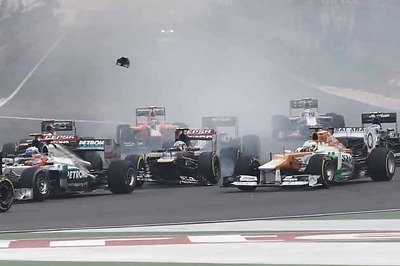
views
The Railways had warned the West Bengal government about the precarious condition of the Majerhat bridge almost 40 days before it collapsed on Tuesday, killing three people and injuring 27.
In a letter sent by Eastern Railway authorities to the Kolkata Municipal Development Authority (KMDA) dated July 27, 2018, which was accessed by CNN News18, the officials were warned about the dilapidated state of the bridge.
“The condition of the RCC beam which supports utilities services are not in good condition and it requires suitable replacement in programmed manner at earliest,” the letter stated.
“You are requested for your preparedness for your shifting of utilities by your end as well as the work will have to be carried out in traffic and power block of Railway,” the letter added.
It warned that “the nearby span towards Mominpur of the same ROB over existing drain found visible deflections towards the Sealdah end. This needs a complete inspection from your side and necessary action thereof”.
A little over a month before a portion of the arterial bridge collapsed on Tuesday, the West Bengal Public Works Department (PWD) had conducted “surface repairs” on the bridge.
On April 16, the PWD’s Alipore division had invited tenders for the “surface repairing” of a 1.2km stretch between Taratala Flyover, Majerhat Bridge and DH Road. The work included “patch repair or patch maintenance”, “bituminous surfacing work with bituminous thickness less than 40 mm”, “repair & rehabilitation” of any bridge and added that the “defect liability period of the work shall be one year from the actual completion of the work.” The estimated amount in the tender was Rs 16.18 lakh.
A source in the PWD, however, said at the time of the repairs, there had been no sign of any structural weaknesses.
“The repair work was specifically for the potholes that were there on the road due to the heavy traffic on it. However at the time there had been no sign of any issues. It is possible that that the ongoing metro work in the area led to weakening of the bridge. But this is a matter of investigation.”
The repairs, completed in the last week of July, were the result of ongoing concerns raised by commuters on the arterial bridge that sees traffic from Behala, Budge Budge, Thakurpur and New Alipore.
A day after the bridge collapse, engineering consultancy company RiTES submitted a preliminary report to the Railways and stated that poor maintenance and improper surface repair could have led to the incident.
RiTES had also warned the West Bengal government in 2016 about the precarious condition of several bridges in the city, including the Majerhat structure, but no action was taken, officials had said.
"RiTES had warned us about the condition of the bridge and had advised that repair work should be conducted. But there was no concrete report as such from them," a PWD official said on condition of anonymity.
Dipankar Sinha, former DG of town planning department of Kolkata Municipal Corporation, said the state PWD department had time and again been reminded about the poor condition of the bridge but the warnings went unheeded. “When painting the bridge in blue and white is a priority, repair and maintenance works take a back seat,” Sinha said.
Arup Guha Niyogi, a professor of civil engineering department of Jadavpur University, said if the standard operating procedures for the repair and maintenance of the bridge were followed, the accident could have been averted.
“There is a stated operating procedure in terms of repair and maintenance, it should have been followed. Moreover, as initial news reports suggest, the road surface was metalled again and again. The rule is: you need to remove the layering every time you repair and put up a fresh layer. But this was not done in this case which in turn created a pressure on the bridge,” he said.
A new bridge needs to be inspected every three months for first two years, in order to see whether there are any flaws in its design. After two years, it is mandatory to conduct repair work in old bridges every year, Niyogi said.
West Bengal chief minister Mamata Banerjee had on Thursday said as many as 20 bridges in Kolkata and Howrah are weak and unsafe as they are beyond their “expiry dates”. She said bridges and flyovers such as Santragachi, Ultadanga, Sealdah, Belgachia and Dhakuria are working “past their expiry dates.”
“I am only saying that Metro vibrations may have caused some damage, I am not saying they are responsible. Let the committee investigate. How could metro authorities say so quickly they weren't responsible, did they conduct proper investigation?” she asked.



















Comments
0 comment